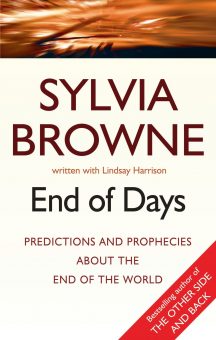The Rastafarians
In the early 1900s a Jamaican Christian named Marcus Garvey founded the African Orthodox Church to provide his countrymen with an alternative to white churches. An activist leader and nationalist, Garvey spoke with eloquent passion about a movement called Back to Africa, or an exodus to the “homeland” of Ethiopia, and the crowning of a king in Africa who would be revealed as the black messiah.
In 1930, Leonard Howell, another Jamaican, initiated a religious movement based on Marcus Garvey’s beliefs (to Garvey’s great displeasure, by all accounts). This movement held that Marcus Garvey was a full-fledged prophet and that Haile Selassie, the newly crowned Ethiopian emperor, was the black messiah, the king of kings and lord of lords, that Garvey had prophesied. Selassie was formerly known as Ras Tafari Markonnen, and those who worshipped him as the Second Coming of Christ began calling themselves the Rastafari, which colloquially evolved into the name Rastafarians.
The Rastas, as they’re also called, don’t actually consider their belief system a religion. Instead, they consider it an ideology, simply a way of life. There are no clergy, and there are no actual churches. They typically worship in small gatherings in the privacy of their homes, studying their Holy Piby, an edited version of the Christian and Hebrew bibles. The other book of intense importance to the Rastafarians is called the Kebra Negast, which outlines the lineage that, in their opinion, establishes Haile Selassie as a direct descendant of King Solomon. They strongly believe in the Hebrew Ten Commandments, the importance of simplicity and purity, the potential corruption of materialism, and the simultaneous worship and dread of Jah, their name for God.
Rastafarians are prohibited from interfering with the natural growth and course of their hair—classic Rastafarian dreadlocks are a natural progression rather than a cultured, manufactured style. The orthodox diet is pure and free of additives and preservatives, and they consume no tobacco or alcohol or coffee, nor salt, seafood, and meat of any kind.
Their famous or infamous relationship with marijuana, which they call ganja, is based on their belief that it aids them in an enlightened knowledge of Jah’s true will. A typical gathering of the faithful will invariably include the passing of a ceremonial pipe, known to Rastafarians as the Chalice, which is filled with the sacramental ganja. The most comparable ritual in the Christian world is the sacrament of Communion.
In 1966, Haile Selassie paid a visit to Jamaica to offer an audience to his faithful believers. He died in 1980, although it’s not an uncommon Rastafarian belief that his death never really happened and instead he left this earth very much alive and ascended to heaven. Both Selassie’s birthday and the date of his arrival in Jamaica are celebrated as important holidays.
As for Marcus Garvey’s Back to Africa movement/prophecy, Emperor Selassie told his Jamaican worshippers that they shouldn’t return to Africa until Jamaica was liberated.
Rastafarians have created their own fascinating beliefs about the Apocalypse. The end of days, in their view, began in 1930, when Haile Selassie was crowned Ethiopia’s emperor. Very soon he’ll reveal himself as the true king of kings and proclaim a day of judgment. The forces of good and evil will collide, and Selassie, the incarnate God, will gather the righteous and return with them to Zion, the promised land, where they’ll live eternally in a paradise where there is no oppression, no wickedness, and none of the earthly materialistic corruption in present society, which they refer to as Babylon.
Pages: 1 2 3 4 5 6 7 8 9 10 11 12 13 14 15 16 17 18 19 20 21 22 23 24 25 26 27 28 29 30 31 32 33 34 35 36 37 38 39 40 41 42 43 44 45 46 47 48 49 50 51 52 53 54 55 56 57 58 59 60 61 62 63 64 65 66 67 68 69 70 71 72 73 74 75 76 77 78 79 80 81 82 83 84 85 86 87 88 89 90 91 92 93 94 95 96 97 98 99 100 101 102 103 104 105 106 107 108 109 110 111 112 113 114 115 116 117 118 119 120




